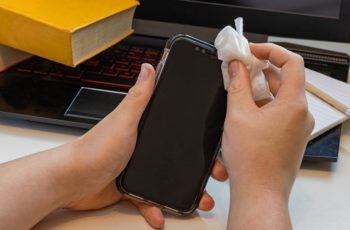Essential oils are highly concentrated plant extracts that contain the ‘essence’ of plants, including their aroma and health attributes.
Nature is full of a huge variety of plants, but only a certain ‘aromatic’ plant species contain ‘essence’ that can be extracted as essential oils.
Why do Plants make Essential Oils?
Plants make these ‘aromatic essence’ for their own use and benefits. In some plants, the aromatic essence attracts insects for pollination or acts as a repellent to potential predators. While in others, it acts as a toxic agent and prevent competitive species from growing nearby. Plants capable of producing essential oils are well-equipped to prevent themselves from fungus and other microorganisms.
The oil-producing substance can be found in any part of a plant, such as flowers, leaves, wood, bark, or seeds. When the specific part is either steam-distilled or cold-pressed, essential oils are obtained.
Did You Know?
There are approximately 3000 different types of essential oils, of which around 300 are available for commercial use.
How do I use Essential Oils?
Due to their proven health and beauty benefits, essential oils have been in use since ages. They are typically used in 3 ways: inhaled, ingested, or applied directly to the skin.
Inhalation is the oldest and the safest method to use essential oils. The oil is either put in diffuser (partially filled with water) or placed on cotton balls and allowed to dispense or evaporate into the air. When used aromatically, essential oils trigger psychological reactions inside the brain and helps in uplifting the mood. They also act as air purifiers and aids in keeping the environment calm and relaxed. However, make sure to keep the diffuser or cotton balls in a properly-ventilated area and restrict the dispensing for continuous long hours.
Ingestion of essential oils should only be done if prescribed by a licensed (& experienced) medical practitioner. Avoid internal application or oral ingestion unless you’ve taken advanced training or certification in essential oil ingestion.
When it comes to the topical use, essential oils are highly concentrated in their raw form and require dilution (using water or some carrier oil) before direct application on the skin. As a thumb rule, keep the concentration level below 5%. Always read the ‘cautions’ and ‘directions’ listed on the bottle before using the essential oil.
What is a Carrier Oil?
Essential oils are natural oils extracted from aromatic plants for therapeutic or medicinal use. But they can cause serious reactions (such as burning sensation or redness) if applied directly to the skin. Carrier oils are used as a base to dilute the essential oils to ‘carry’ them to the skin and make them safer for topical use. Coconut Oil, Jojoba Oil, and Sweet Almond Oil are a few examples of commonly-used carrier oils.
Final Take
Essential oils have become increasingly popular due to their numerous health benefits, but they should always be used with caution and care. Whether or not a particular oil is safe for you depends upon a number of factors including your age and medical condition. Go for pure, organic essential oils. Always do a patch test before applying the oil to a larger skin area.


